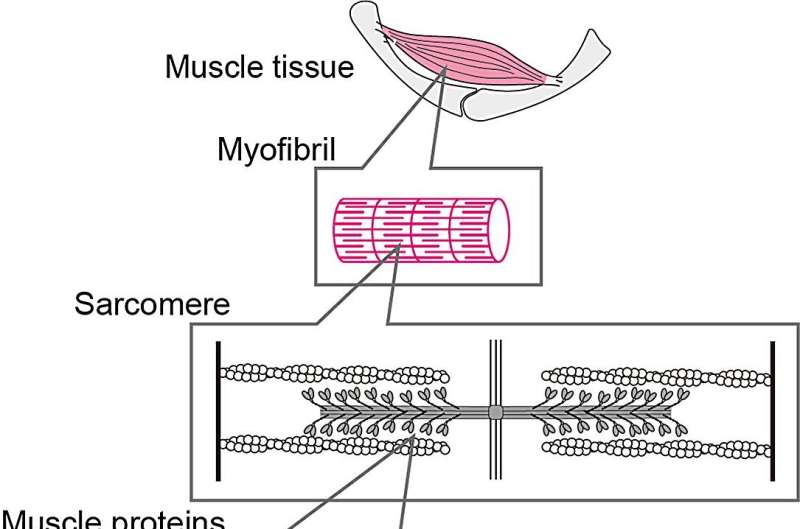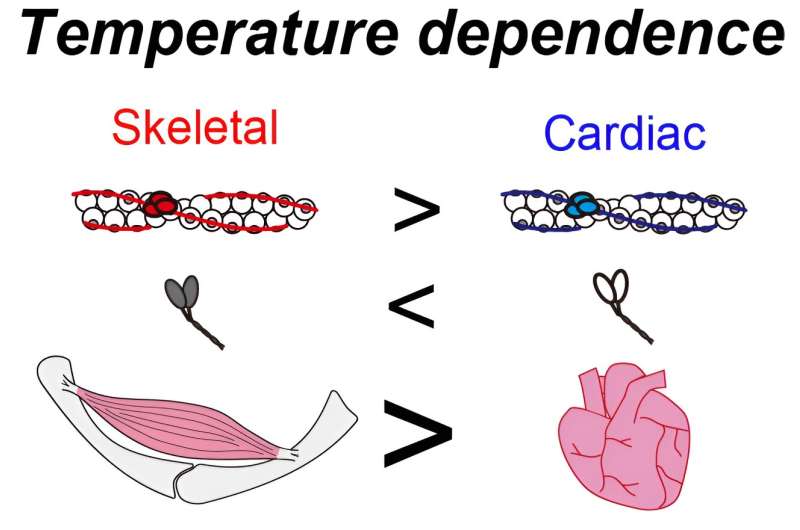This article has been reviewed according to Science X's editorial process and policies. Editors have highlighted the following attributes while ensuring the content's credibility:
fact-checked
peer-reviewed publication
trusted source
proofread
New evidence explains how warming-up enhances muscle performance

Everybody knows the importance of warming up your muscles before a workout. But what is actually going on when we warm our muscles up, and are all muscles the same? You might be surprised to find out that the science behind this routine activity hasn't always been clear.
Now, in a study recently published in the Journal of General Physiology, a multi-institutional research team, led by Osaka University, The Jikei University School of Medicine and National Institutes for Quantum Science and Technology, has revealed how heating affects the contraction of different muscles, and how this might benefit populations in need of improved exercise performance.
Skeletal muscle contracts in response to electrical signals from the nervous system, which activate proteins in muscle cells and allow us to move. The team previously explored how cardiac muscle contractions are affected by temperature, determining that our heart can contract efficiently within the body temperature range.
Next, using muscle proteins and advanced microscopy, the research team wanted to determine how temperature affects skeletal muscle: do skeletal muscles have similar temperature sensitivity, or are they different from the muscles of the heart?
The research team found that some of the proteins in the muscle cells act as a temperature sensor, and that heating affects skeletal and cardiac contractile systems differently.

"Our findings point to differences in the temperature sensitivity of proteins responsible for contraction in skeletal vs. cardiac muscles," says co-lead author Kotaro Oyama. "Basically, the skeletal muscle that moves our body around is more sensitive to heating than the heart."
The physiological significance of these findings will become clear when the functional difference between skeletal and cardiac muscle is considered. While skeletal muscle only generates a certain amount of force when required, the heart is meant to beat continuously.
"The higher temperature dependence of skeletal muscle may allow it to contract relatively quickly upon warming up, even from slight warming due to light movement or exercise. This means that the muscle can save energy and rest when not needed. In contrast, the lower temperature sensitivity of the heart may be beneficial for maintaining a continuous beat, regardless of temperature," explains co-lead author Shuya Ishii.
This study provides new insights into how, at the protein level, warm-up before exercise enhances muscle performance. The discovery that some muscle proteins act as a temperature sensor may lead to a new hyperthermia strategy, in which skeletal muscle performance is improved by warming up the muscle.
Incorporating appropriate warm-up routines into the daily lives of individuals, particularly the elderly population, could improve their muscle and exercise performance, thereby reducing the risk of injury and helping to maintain their independence.
More information: Shuya Ishii et al, Myosin and tropomyosin–troponin complementarily regulate thermal activation of muscles, Journal of General Physiology (2023). DOI: 10.1085/jgp.202313414



















